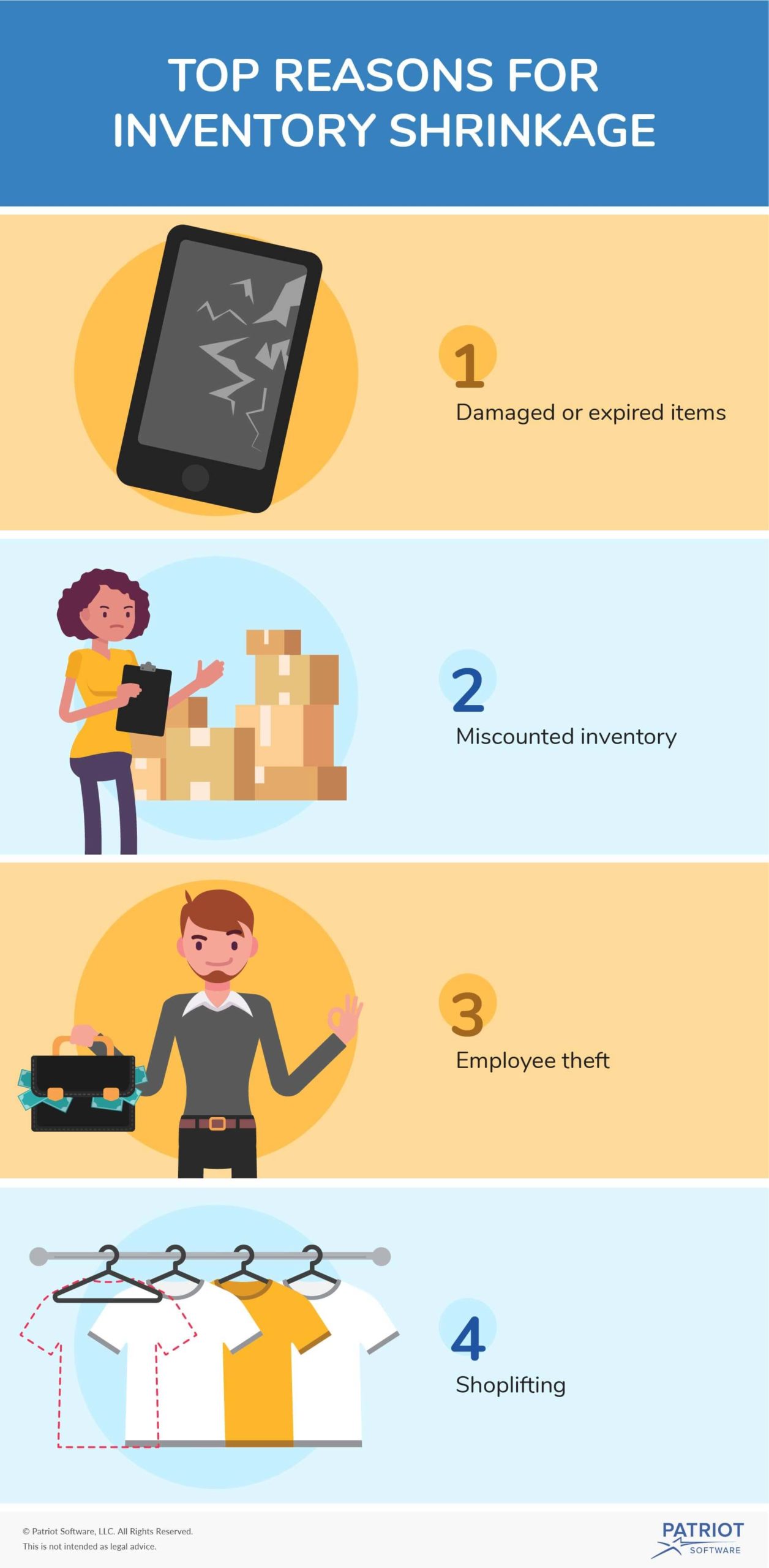When running a business, you likely face setbacks due to unforeseen costs. Unplanned expenses, like inventory shrinkage, can lead to a drop in profits and require you to alter your accounting books.
To combat significant inventory shrinkage, you must familiarize yourself with what it is, why it happens, and preventative actions you can take. And when it does happen, understand how to make correcting entries in your accounting books.
What is inventory shrinkage?
Inventory shrinkage is when your business has less inventory (e.g., goods) than what you recorded in your books. Although some inventory loss is generally a normal part of running a retail business, high inventory shrinkage can indicate underlying problems.
Reasons for inventory shrinkage
There are a number of reasons for inventory shrinkage. Inventory shrinkage can take place when items, such as expired produce, are naturally no longer sellable. Or, shrinkage might be due to damaged items.
Inventory shrinkage may also be the result of errors. You or one of your employees might miscount items. Your vendor might also make errors when they supply you with inventory items.
In some cases, you might have inventory shrinkage because of malicious actions, such as theft, shoplifting, or fraud. Vendors may commit fraud and give you less inventory than what you purchased. Or, employees might steal inventory. Shrinkage is also common when customers shoplift from your business.
Calculating inventory shrinkage
To determine how much shrinkage your business has, calculate your inventory shrinkage rate. This rate is a percentage that represents how much inventory your business lost due to damage, theft, errors, etc. The lower your inventory shrinkage rate, the less inventory you lost.
To find the inventory shrinkage rate, you need to know the cost of goods sold, how much inventory you have, and how much was lost to shrinkage.
First, calculate your cost of goods sold and subtract the amount from your inventory. Subtracting your cost of goods sold from your inventory shows your inventory’s book value, or the recorded amount.
Recorded Inventory = Inventory – Cost of Goods Sold
Once you know the amount of inventory you should have, determine how much inventory you actually have. This shows you your inventory losses.
To find the inventory shrinkage rate, divide your inventory losses by the amount of inventory you should have.
Use the following formula to calculate your business’s inventory shrinkage rate:
Inventory Shrinkage Rate = (Recorded Inventory – Actual Inventory) / Recorded Inventory
Multiply your inventory shrinkage rate by 100 to convert it into a percentage.
Example
Let’s say you recorded $50,000 in inventory value. Your cost of goods sold is $12,000. Your inventory’s book value should be $38,000 ($50,000 – $12,000). However, due to shrinkage, your actual inventory value is $35,000. Use the inventory shrinkage rate to find out how much value you lost.
Inventory Shrinkage Rate = ($38,000 – $35,000) / $38,000
Inventory Shrinkage Rate = 0.079 X 100
Inventory Shrinkage Rate = 7.9%
Your inventory shrinkage rate is 7.9%. This rate means that you lost 7.9% of your inventory value to shrinkage.
Loss prevention
Having high levels of inventory shrinkage can be devastating to your company’s bottom line. You can avoid or lessen inventory shrinkage by taking action.
When you order new inventory, verify that you receive the correct amount you purchased. Count new inventory and immediately notify your vendor if you received an incorrect amount.
To prevent inventory miscounting, double check your numbers. You might involve another employee so you can compare your numbers.
If you delegate inventory management, ask two or more employees to count inventory. By involving multiple employees, you can decrease the chances of one employee recording fraudulent numbers. And, ask employees to report suspicious behavior to discourage employee theft.
Don’t go long periods without counting your inventory. Some businesses do a daily or weekly count of inventory to catch fraudulent activities more quickly.
Calculate the value of inventory when it gets damaged. To reduce damages, come up with new processes employees can use when handling inventory.
If you sell items that go bad, like food, offer discounts when they get close to their expiration dates.
To prevent inventory shrinkage from shoplifting, encourage employees to monitor suspicious customers. And, implement a small business return policy to prevent customers from returning stolen goods.
Monitor your inventory by calculating your shrinkage rate periodically, like once a month. That way, you can compare shrinkage rates to past accounting periods. If your shrinkage rate suddenly increases, look into possible causes.
Inventory shrinkage journal entry
When your business experiences shrinkage, you must adjust your accounting books. Record inventory losses by increasing your Shrinkage Expense account and decreasing your Inventory account.
Debit your Shrinkage Expense account and credit your Inventory account. To adjust for shrinkage, create a journal entry that looks like this:
Let’s say you lose $1,000 of inventory to shrinkage. Because you previously recorded a higher value for inventory, you must decrease your Inventory account. And, increase your Shrinkage Expense account to reflect your increased expenses.
When you lose inventory to shrinkage, be sure to update your accounting books. Patriot’s online accounting software makes it easy to record expenses. And, we offer free, U.S.-based support. Get your free trial today!
This is not intended as legal advice; for more information, please click here.

